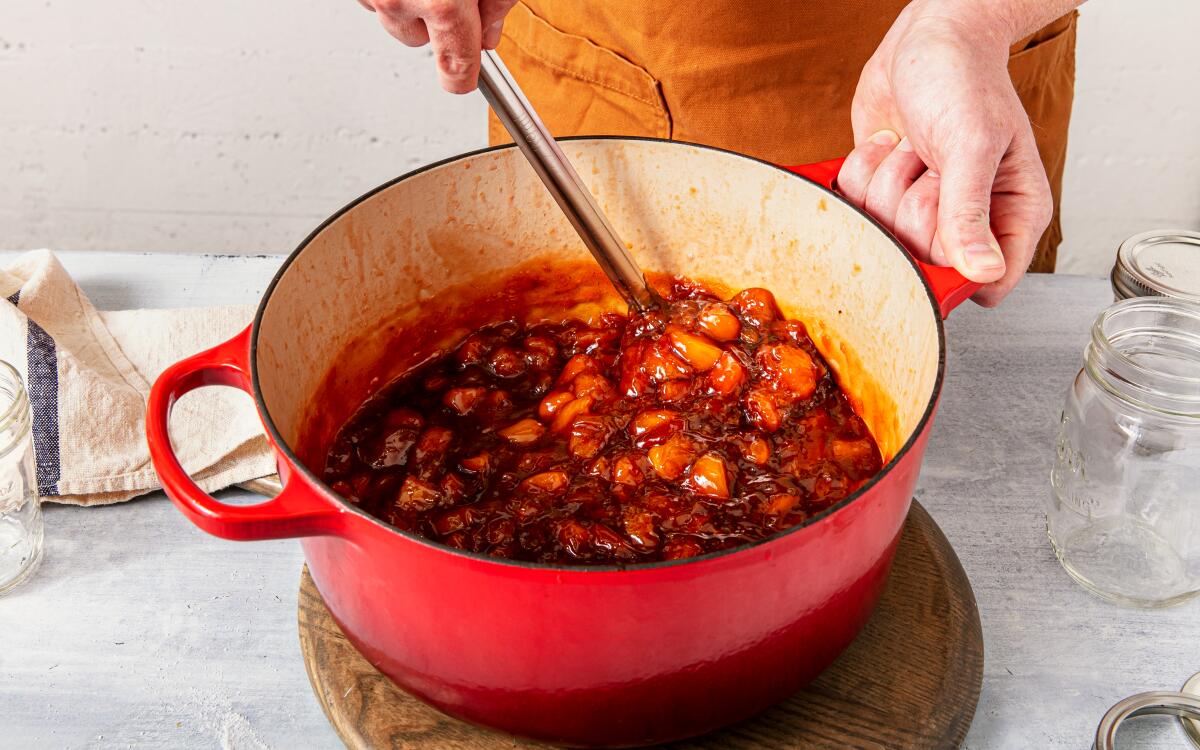Master Stone Fruit Jam

- Share via
This recipe makes jam that is 69% fruit, 23% sugar and 8% lemon juice. If you want a sweeter jam, you can add more sugar, but try not to use less than stated here to ensure you properly preserve the fruit in enough sugar. Leave the skins on the fruit for added color, texture and flavor, but if you don’t like them, simply peel the fruit before pitting and chopping.
This recipe is a component of the feature “Seasons of Preserves: Stone Fruit,” which is part of a four-part series on preserving fruit at home called “L.A. in a Jar.”
In a large Dutch oven or heavy-bottomed saucepan, combine the fruit, sugar and lemon juice and then add a pinch of salt. If you want to use a vanilla bean, cinnamon stick or bay leaf, add it now. Stir everything together and let the mix stand at room temperature, stirring occasionally, to allow the sugar to draw out the moisture from the fruit and macerate, for at least 1 hour or up to 4 hours. You can let the fruit macerate for up to five days in the refrigerator before you make the jam.
Place the pot over high heat and bring to a boil, stirring to ensure all the sugar is dissolved. Once the mixture begins boiling, set a timer and continue cooking, stirring often, especially toward the end, until the jam is thickened and glossy and no longer watery, anywhere from 10 to 20 minutes, depending on the water content and ripeness of the fruit you use. At the beginning of cooking, use a spoon to skim off any foam or scum from the surface of the jam, rinsing it off in a bowl of cold water in between uses; this will give the jam a clearer appearance. You’ll know the jam is ready when you stir and the jam feels like it is sticking to the bottom of the pot, is bubbling like lava and there is no longer separation between the fruit and the liquid, but rather, it moves as one mass. You can also monitor the temperature of the jam with an instant-read thermometer; when the temperature of the jam reaches between 218 and 221 degrees, it is done.
Remove the pot from the heat and, if storing in jars, use a ladle to transfer the hot jam into clean glass jars. Cover with lids, let cool to room temperature, then store the jam in the refrigerator. If storing the jam in plastic storage containers, let it cool to room temperature in the pot before transferring to the containers. Store the jam in the refrigerator for up to 3 months.
Get our Cooking newsletter
Get a taste of Los Angeles — and the world — with recipes and kitchen tricks from the L.A. Times’ Cooking newsletter.
You may occasionally receive promotional content from the Los Angeles Times.










